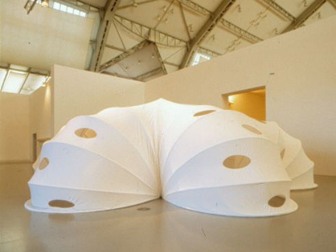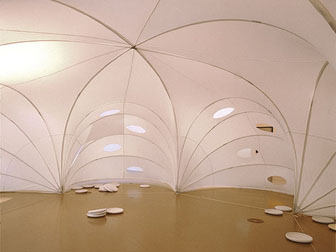Play and Participation in Contemporary Arts Practices
What Form Does Ludic Participation Take?
- Carsten Höller’s Frisbee House (2000)
- it invites participants to do just that. A Frisbee can be thrown either from inside the tent into the room or from the room outside into the tent.


- Ballhaus(1999)

- Exzentrische Ballhaus (Eccentric Ball House, 2013)

- such works can be understood to have a form that is systematic but also changeable and dynamic, that is operationally closed in play but also remains open
- it invites participants to do just that. A Frisbee can be thrown either from inside the tent into the room or from the room outside into the tent.
- Gabriel Orozco’s Oval Billiard Table (1996)

- Orozco disagrees: “I do not think that the games in my work have no rules. The rules are there, but they have to be discovered.”23
- An answer to the question of “Other – but how?” requires communication between would-be players as to what set of rules, however provisional, will operate.